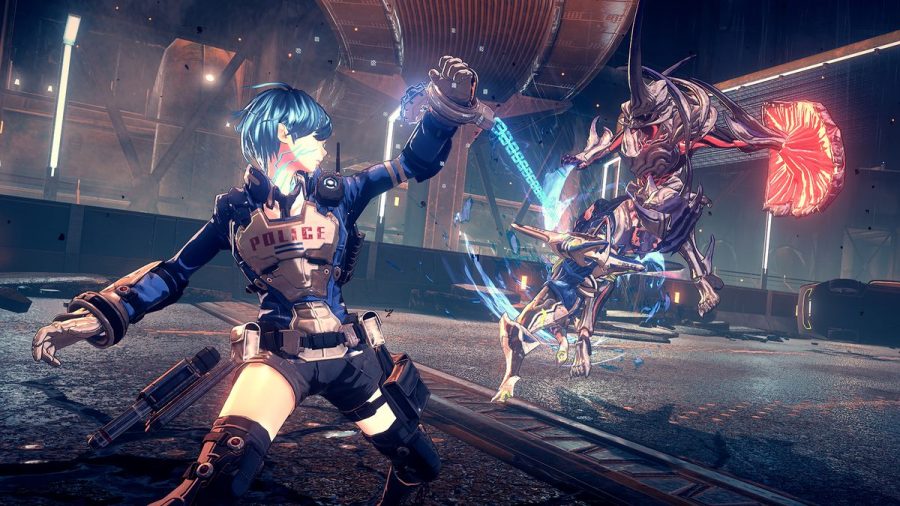Astral Chain Review
Platinum Games is one of my favorite developers, and as a fan of fast paced action games such as “Devil May Cry” and “Yakuza,” Platinum’s titles butter my biscuits more than most other action games. One of their best collaborations has always been with Nintendo and the Wii U hits “Bayonetta 2” and “The Wonderful 101.” After nearly five years, Platinum returns to Nintendo on the innovative Nintendo Switch to bring the next big Nintendo Franchise.
Enter: “Astral Chain”
Released in late August, “Astral Chain” follows the journey of the Howard twins. One of the twins can be named by the player and the other is named Akira by default. As the player, you are the newest members of Neuron, a special police task force with the mission to protect what is left of humanity from the Chimera. The Chimera are creatures seeping in from voids opening throughout the planet bridging together your world as well as The Astral Plane for invasion. To protect The Ark, an artificial island where humankind’s sanctuary rests on after the earth was nearly conquered by Chimera, Neuron develops a way to summon their own Chimera to fight back. This Chimera is called Legions, linked to the user neurologically via a device that connects the two with a neon blue chain referred to as the Astral Chain.
The world building is impressive as it showcases an intriguing techno neon sanctuary. It has an almost cinematic way of showing off the stylish environments that feel as if they came straight out of a page of manga. My only problem with the worldbuilding is that at times, it feels the need to tell rather than show, forcing exposition down your throat after the tutorial. It almost goes without saying, but if a movie, game, or television show has to tell and explain to you the world rather than showing you, then you might as well be reading a book.
On the positive side, this is one of the best looking games on the Nintendo Switch. “Astral Chain” has incredible shading and lighting, with brilliantly designed character models and vibrant colors, mainly red and blue, giving off an aesthetic that truly shines above many others. It’s eye candy at its finest and is easily Platinum’s best looking title yet. It’s also an outlier for a Platinum game as the framerate is at 30 FPS, 50 percent less than previous titles from Platinum that would run at 60 like “Bayonetta 2.” Usually, something like this happens due to a plethora of content where a framerate must be lowered to remain stable and accomodate for the power required to properly run the game, and boy, there sure is content.
The gameplay is the most important part of any game, especially one from Platinum. The entire career of the company comes from fast action combat that has drawn in fans from all over. The game was directed by Takahisa Taura, the lead game designer for NieR Automata and was supervised by “Devil May Cry” and “Bayonetta” creator Hideki Kamiya. To say the combat is something different from most character action games would be correct. “Astral Chain” focuses on playing as two characters at once: your main character and a Legion. There are multiple different Legions to play as with different abilities and weapons, with the main ones being a sword Legion: great sword, bow and arrow, giant fists, and one that’s essentially a wolf. Each are incredibly unique to play, and along with the officer, synch attacks, and other combat mechanics\; the possibilities are limitless. There are also many upgrades and abilities that can be used to give your characters a boost or even a special move that add further complexity to the combat as you mix and match to fit your playstyle.
On a lesser note, the characters are pretty bland, underdeveloped, and unintriguing. The player is silent, and doesn’t really exhibit any actually interesting or compelling character traits, whether they be conveyed via verbal or non verbal means. This wouldn’t be as much of a problem if it weren’t for other silent protagonists like Link from the Zelda games, Godon Freeman from “Half-Life”, or Byleth from “Fire Emblem Three Houses”, all of which are perfect examples of a silent, or at least near silent, protagonist with genuine character development and qualities. Just because a character is silent does not mean they have to be a blank slate. Akira, the player’s sibling, isn’t much better. At times they can be pretty respectful and understandable, but other times, they aren’t the likable type. An example comes from File 3 when Lappy, the officer who dresses up as Neuron’s dog mascot, keeps a stray cat as a pet in the base and Akira takes it away with the intent to dispose of it. Later on, both the player and Akira land at their mission and the cat runs off with Akira showing a sign of disappointment and slight amounts of sadness. It’s funny, as that was the intention, but it was also hard to side with Akira as they were pretty hypocritical. The other characters just feel like basic archetypes at times with little actual substance to them that has been seen over and over again in infinite amounts of anime.
Overall, is “Astral Chain” worth it? Yes, but mainly for the combat. The story isn’t the best, but ultimately, it’s better than most from Platinum. Its addicting fight sequences will captivate any viewer with their amazing presentation and quick, reflexive, but concentration-required combat. “Astral Chain” is an amazing jump in the right direction, and although there are some bumps along the road, it’s a trip you won’t want to miss.

Colin Campbell is the senior managing editor for the Eagle Angle. His interests are current events, political discussions, criticizing and making fun of...





